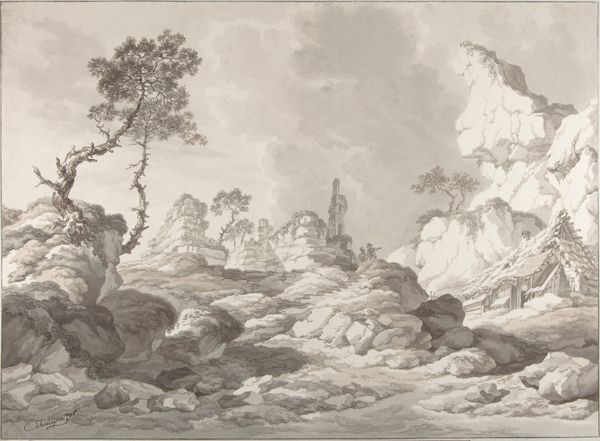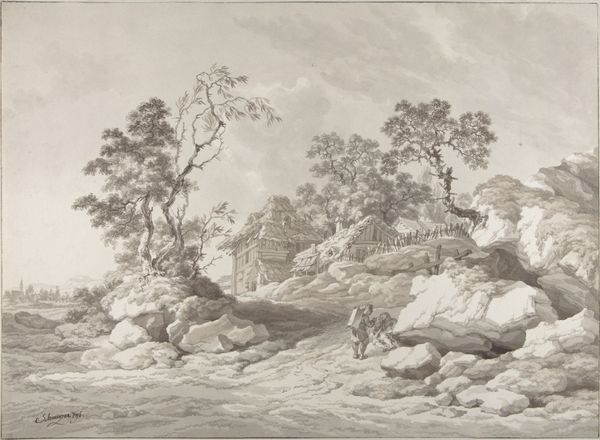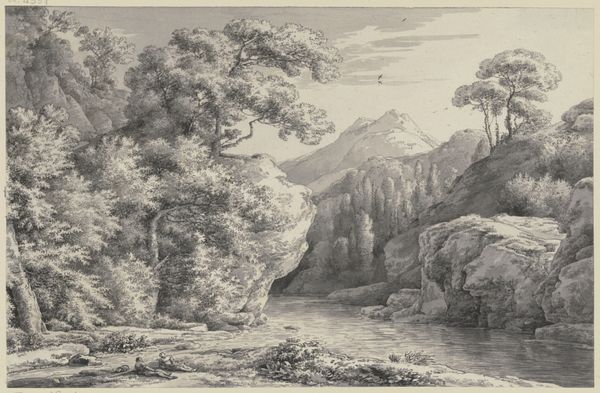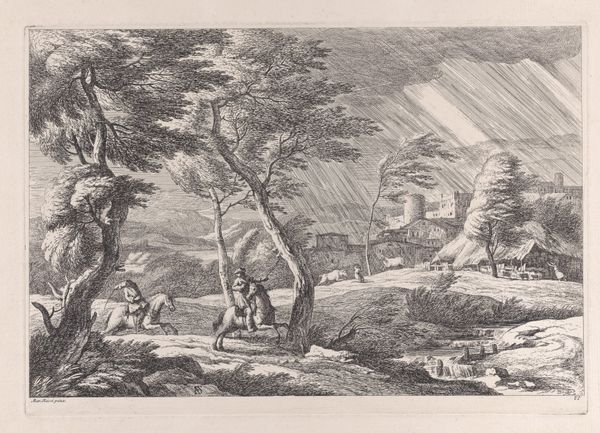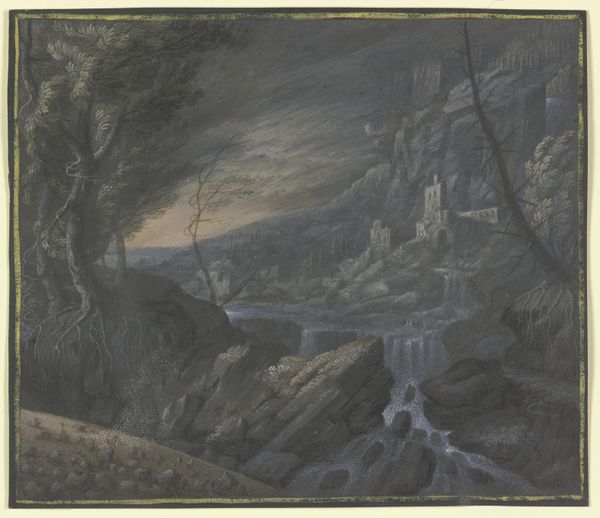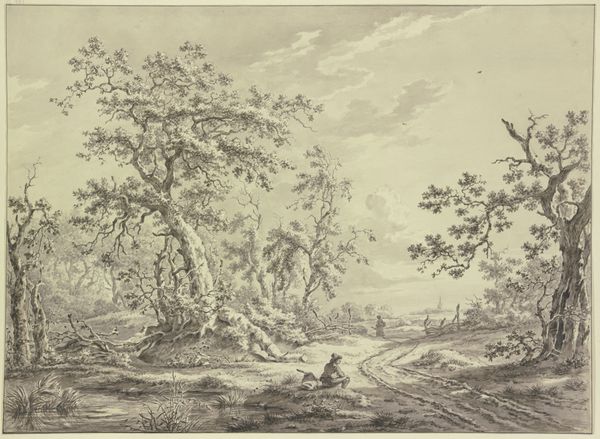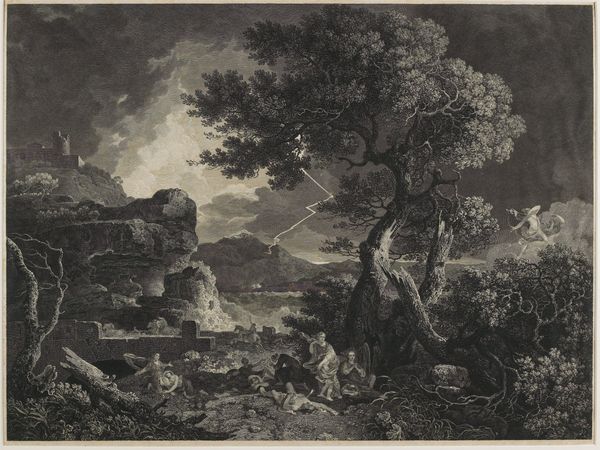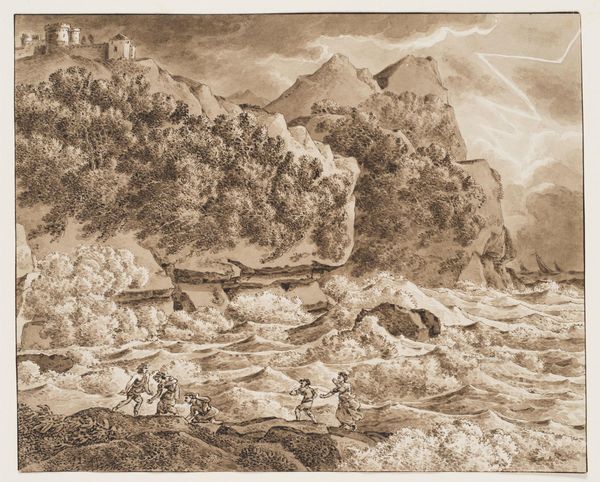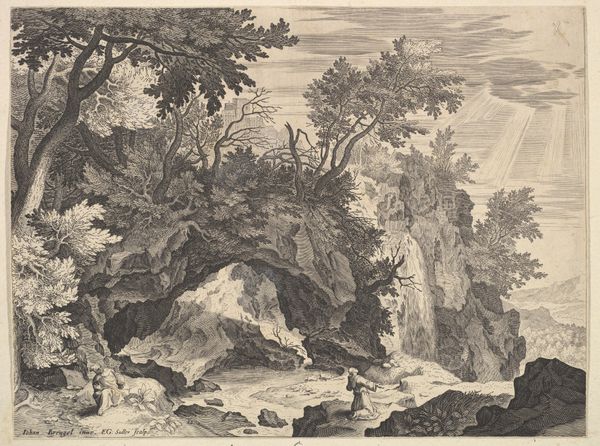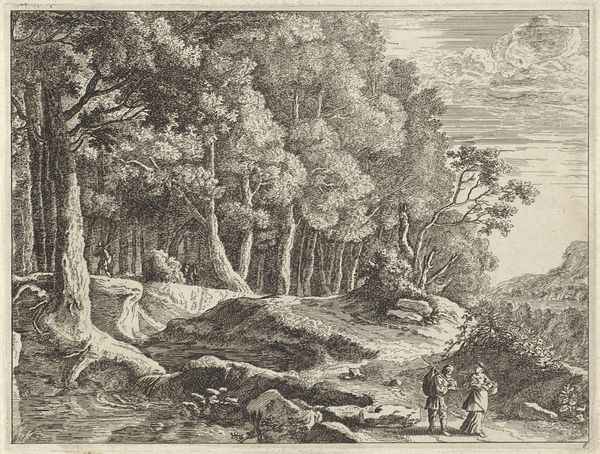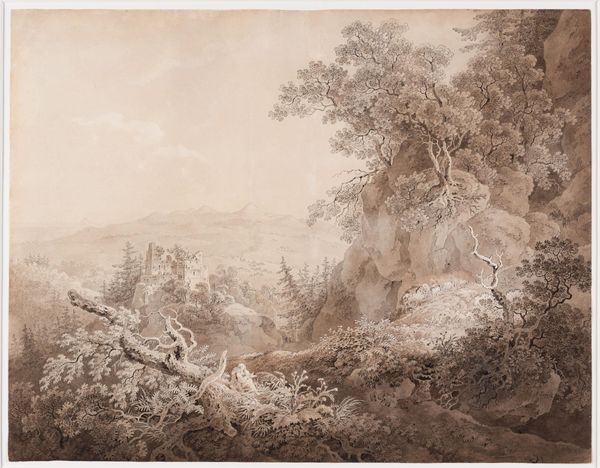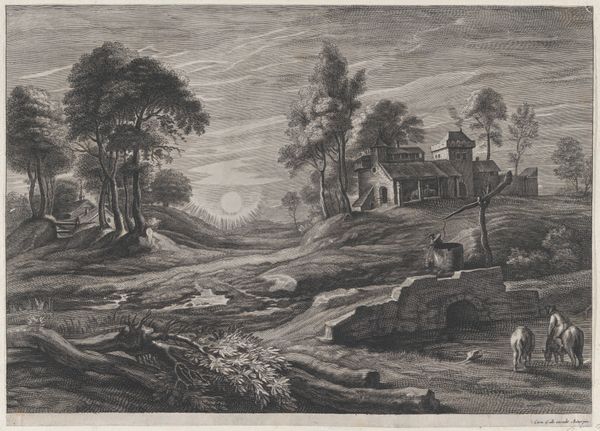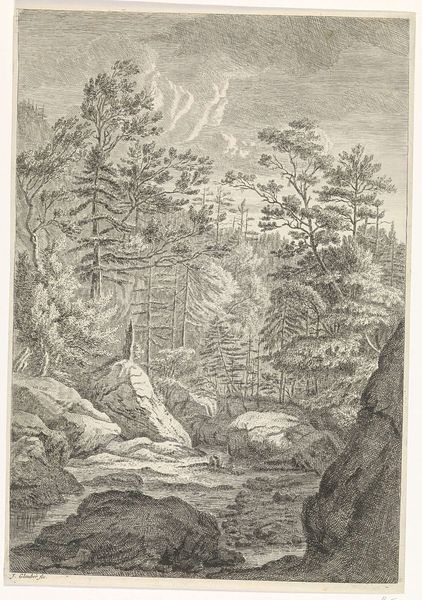
drawing, print
#
drawing
# print
#
pencil sketch
#
human-figures
#
landscape
#
charcoal drawing
#
figuration
#
pencil drawing
#
romanticism
#
pen-ink sketch
#
pencil work
Dimensions: sheet: 16 9/16 x 22 5/8 in. (42 x 57.5 cm)
Copyright: Public Domain
Curator: Jakob Matthias Schmutzer’s "Landscape near Mödling," created in 1796, captures a particularly sublime landscape. I am immediately drawn into the contrasts within the composition. Editor: It strikes me as intentionally unsettling; a sense of precarious balance with all this layered pencil work creates a textural richness, despite the limited palette. It's a drawing but with such careful blending, it also carries the feel of an early lithograph. Curator: Schmutzer situates the figures centrally within a somewhat enclosed natural proscenium; in doing so, he positions us as viewers looking out alongside the figures. The artist is utilizing nature as a theater—and the human condition in relation to the natural world takes center stage. I am reminded of the theories posited by 18th century aesthetic philosophers like Edmund Burke on the sublime, and this drawing reflects those principles perfectly. Editor: And the labor behind the pencil sketch. The repetition of lines, the building of texture... it speaks to a craftsman’s eye, thinking through how these materials - paper, graphite, and ink - could construct this feeling of nature, filtered through the lens of human experience. Were these landscapes, or something else? Were the sites known for specific types of mining or manufacturing? Curator: Perhaps both. Considering Schmutzer was working during a period of significant social and political upheaval, especially in relation to Enlightenment thinking and early nationalist sentiments, I wonder what symbolic weight was afforded to these particular landscapes in Austria? The framing by this imposing cave adds a certain precarity to that reading. Editor: The materiality contributes to a certain tension. It almost feels industrial and constructed, not just observed; which gives you a different entry point into thinking about its creation. Curator: Absolutely. By analyzing these contrasts through the lens of the artist’s social context, we can unlock a richer understanding. Editor: Yes, it makes you consider how Romanticism in art relies upon - and obscures - very particular means of production and craft, that too often we disregard. Curator: A landscape of quiet complexities indeed. Editor: Leaving much more for us to investigate.
Comments
No comments
Be the first to comment and join the conversation on the ultimate creative platform.
